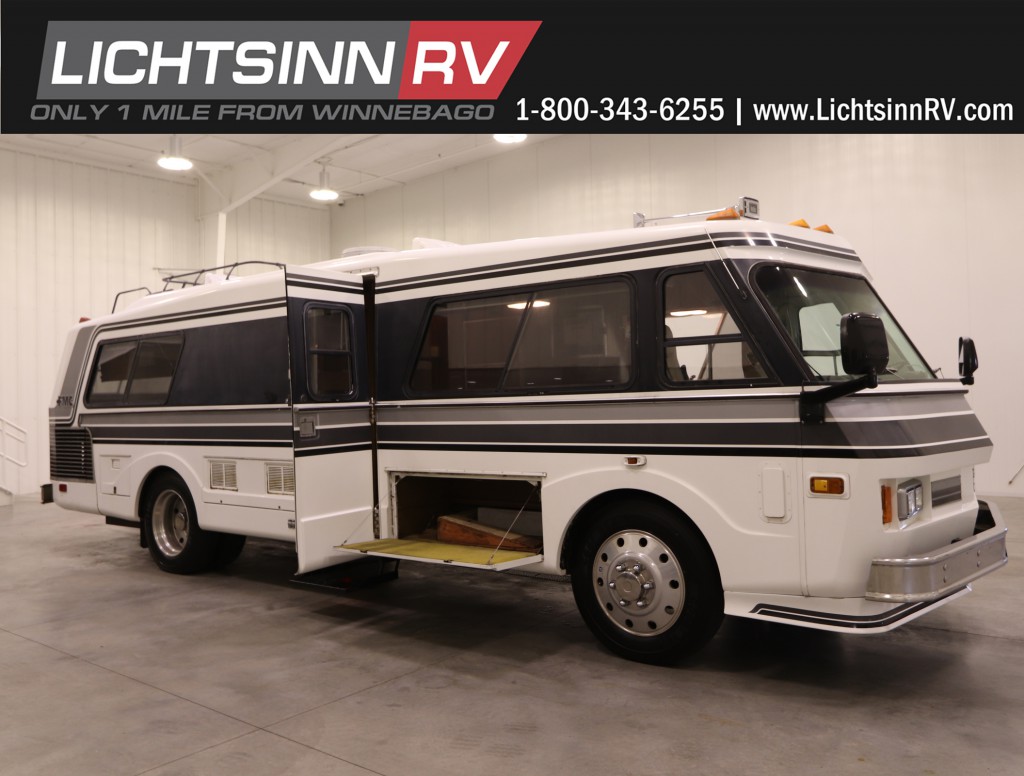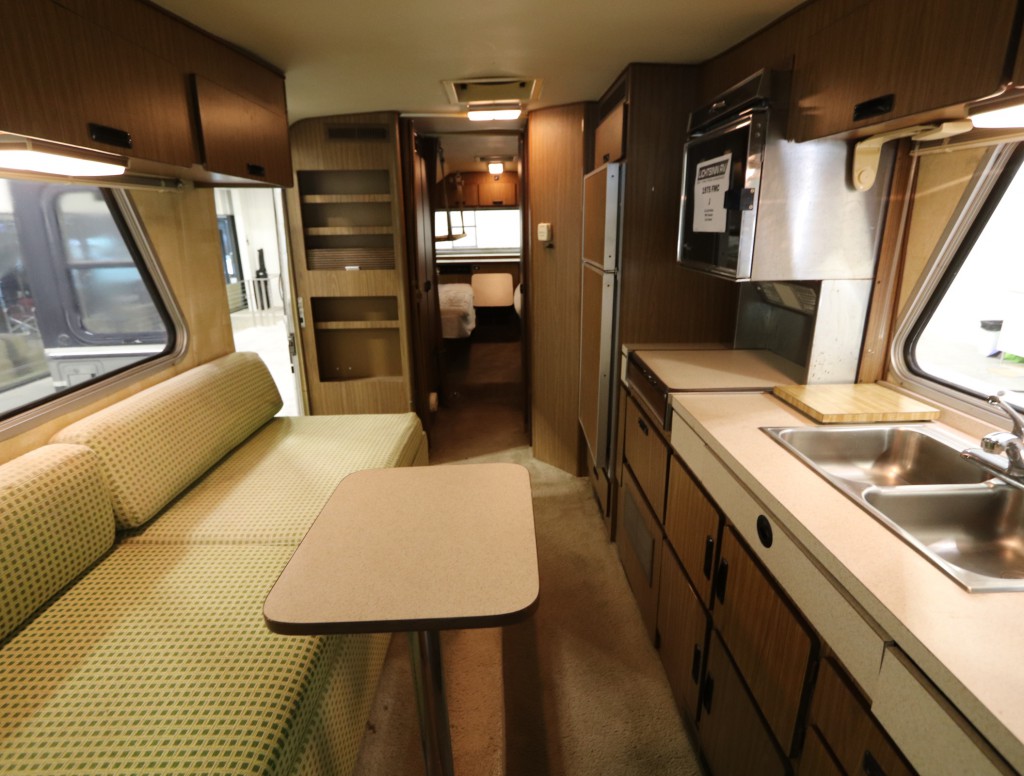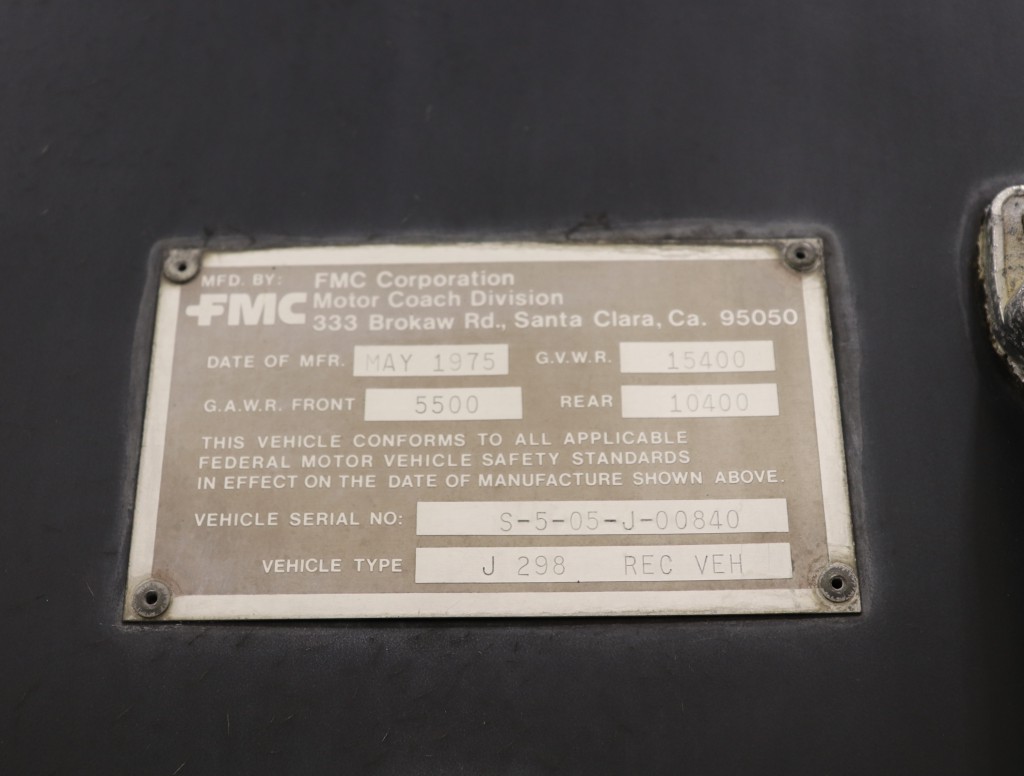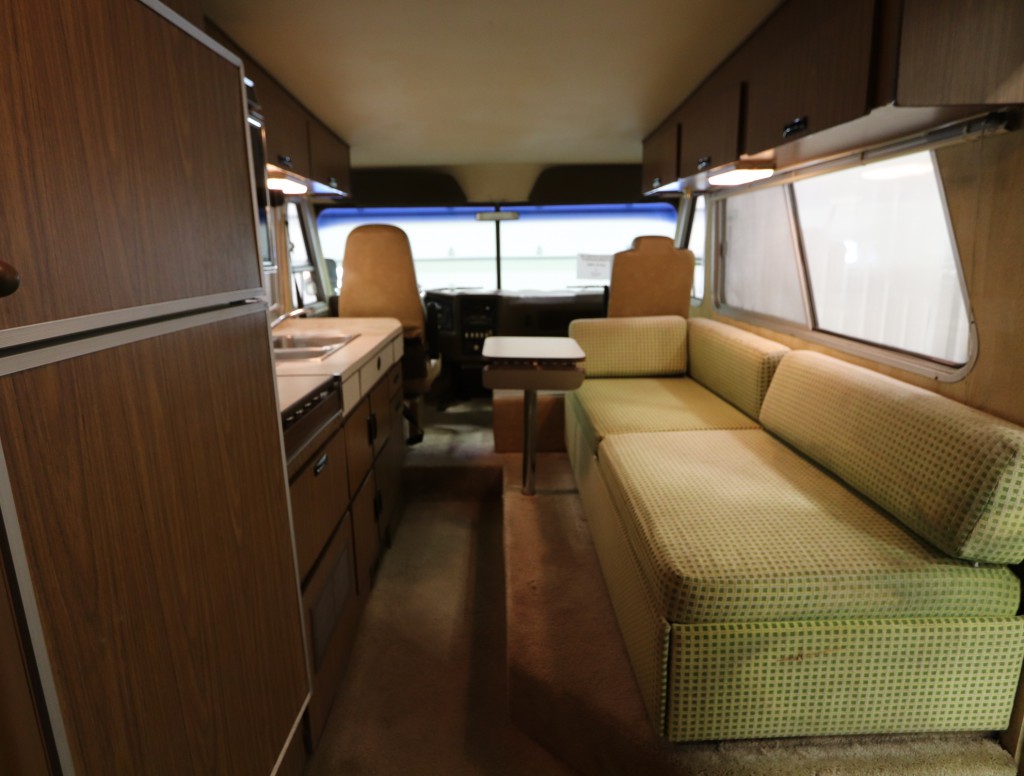Occasionally we have super unique, vintage trades come through Lichtsinn RV and the 1975 FMC Model J we recently took in is no exception. 
The History of the FMC Motorhome
The FMC Motorhome has an interesting lineage, FMC is the acronym for Food Machinery Corporation. FMC got its started in 1883 when inventor John Bean developed an innovative insecticide pump. The name was changed from the John Bean Manufacturing Company to the Food Machinery Corporation in 1928 when the company got into the canning machinery business. The company kept adding mechanized products and eventually started producing amphibious vehicles for the military.
During a lull in its military vehicle contracts in the late 1960s, FMC turned its sights towards recreational vehicles. By 1972, FMC had transferred personnel from its ordnance division and formally launched a motor coach division in Santa Clara, California. Initial prototypes were 19 and 23 feet long, but neither went into production. FMC settled on a 29 foot size, and the first one was completed in late 1972.
The well-made and pricey coaches, which sold for between $27,000 and $54,500 or about the same price as an average home of that era, were popular among upscale Motorhome buyers. Race car drivers Mario Andretti and Parnelli Jones owned FMCs, as did entertainers Clint Eastwood, Carol Burnett, Pat Boone and James Brolin. But the most famous FMC owner was CBS reporter Charles Kuralt, host of the popular news feature On the Road With Charles Kuralt. An FMC was the last of Kuralt’s six motorhomes. It is on public display at the Henry Ford Museum in Dearborn, Michigan. FMC coaches were manufactured from 1973-1976.
The 1973 energy crisis put a damper on the manufacture of all brands of motorhomes, so FMC was in a difficult position from the beginning. By 1975, FMC had a contract to produce the Bradley Fighting Vehicle, and in September 1976 converted all tooling in
its factory to the manufacture of tanks. The FMC motor coach had reached a dead end. The final tally for the FMC was slightly more than 1,000 units, approximately 135 of which were transit buses.
About half of the transit buses were eventually transformed into motorhomes. There is believed to be 7-800 units still out there.
1975 FMC J Features and Options
During trade in, we have taken this FMC through a major operating systems inspection.
This coach is powered by the tried and true FMC powertrain:
1. Converted from a Chrysler gas powertrain to a diesel pusher in 1990, it has a General Motors Detroit Diesel 8.2 liter engine installed at 86,358 miles on the RV
2. 500 lbs ft of torque or power
3. New Allison transmission installed in 1990
4. New chassis battery December 2017
5. New house battery July 2018
Includes the following aftermarket installations:
1. New 6000 watt gas generator in 1996
2. Duo Therm water heater in 1994
3. 22.5 inch Alcoa chrome aluminum wheels
4. Full body Imron paint in 1990
5. Upgraded driver and passenger seat
6. New Maxx air fan
7. New black, grey, and fresh water piping
Includes the following factory installed features:
1. Custom steel chassis with aluminum upper cage frame and fiberglass exterior
2. Twin bed floor plan with bunk beds
3. Master bedroom game Table
4. 84 cubic ft of interior storage
5. Winterization kit
6. 4 burner stove
7. Oven
8. 33 foot Turning Radius
9. Sofa bed
10. Rear twin beds
11. Drop down beds in master bedroom
12. Wardrobe
Includes the following exterior highlights, in addition to the specifications on our website page and brochure:
1. 60 gallon fuel capacity
2. 20 gallon LP capacity
3. 6 gallon LP water heater with engine preheat
4. 50 amp electrical service
5. Central air conditioning system
6. Trailer tow package

